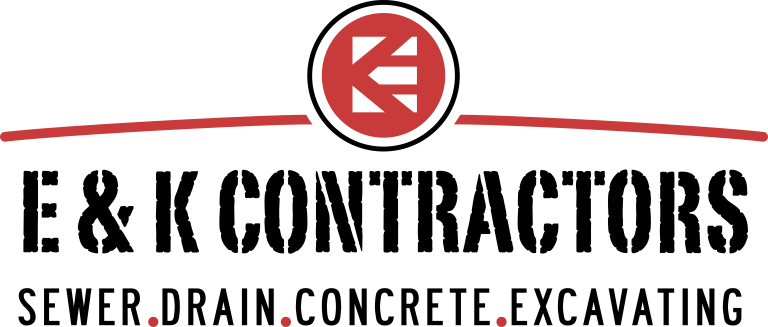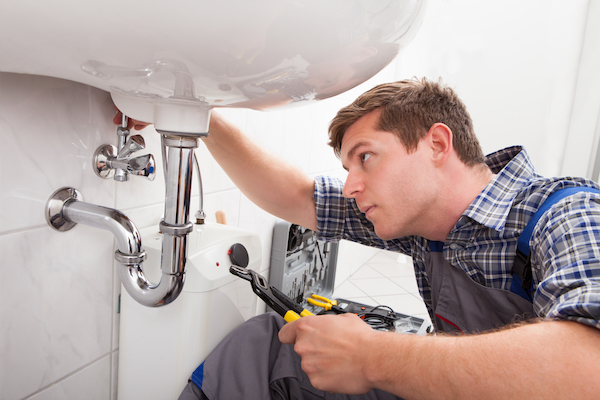Home plumbing is typically not something one spends a lot of time thinking about. Turning on the kitchen faucet, taking a shower, flushing a toilet, all of these are done without much thought or understanding of how it all works. Modern plumbing systems are remarkably reliable, and designed simply enough so the consumer can repair, maintain and upgrade the system easily if necessary. At E&K Contractors we believe understanding the home plumbing system can help when a small repair needs to be made, and as a way to determine when it’s time to call in a professional.
Most home plumbing systems have two main components that allow for water to run to the home and waste away. These two main systems are called the Water Supply Line and the Drain-Waste-Ventilation Line.
Water Supply Line
The Water Supply Line is the main plumbing line that brings potable (safe) water to your property. These copper pipes are usually about 1 to 1 and 1/2 inches in diameter and are connected to the main water line. The main water supply line then branches off, with one line running to your water heater and multiple lines branching and connecting to your cold-water faucets. The following appliances and plumbing fixtures are hooked up to your potable water supply.
- Kitchen and bathroom sinks
- Toilets
- Bathtubs and showers
- Dishwasher
- Washing machine
- Outdoor faucets for hoses
- All areas with running water
Building codes require that a water shut-off valve be installed at the point of entry. For city water, the valve is usually right next to the meter. For a deep-well system, the valve is located where the water-supply pipe exits the pressure tank. Everyone should know where the shut-off valve is located, and how to close it in case of a burst pipe or other emergency. In fact, it’s a good idea to open and close the valve two or three times a year to ensure it’s working properly and hasn’t seized up due to rust, corrosion or mineral deposits.
Located throughout the system, there should be individual valves located by the sink, toilets, washing machine and for the outside plumbing system as well. They can be shut off without interrupting the water flow to the other areas of the house.
Drain-Waste-Ventilation Line
The Drain-Waste-Ventilation Line is a series of piping that is connected to sinks and is responsible for providing an exit for waste from the house to the main sewer line.
Usually, these pipes are much thicker than the water supply pipes and are made of PVC or another type of durable plastic. Unlike water supply piping, these pipes rely on gravity to remove waste from the home, rather than pressure. For these pipes to work correctly, they are angled at approximately 1/4 inch downward per foot of pipe.
Your drainage system consists of the following components.
- Drain Pipes – Any fixture that has running water also features a drain with associated pipes. With downward angles, these pipes rely mostly on gravity to facilitate the flow of water. Waste water flows out of the home to the main waste and vent stack, which connects to an underground sewer line.
- Drain Traps – According to plumbing codes, every drain must feature a trap to prevent backflow. The trap is a U-shaped pipe that sits just below the drain and connects to the drainage pipes. Sometimes called a “P” trap, this pipe constantly holds water to prevent sewer gases from entering the home. Underneath sinks, this pipe is clearly identifiable, since it is curved.
- Drain Vent – The roof features a drain vent that releases air into the drain pipes. The airflow ensures the proper movement of waste water through the system. It is important to keep this vent clear of debris to avoid slow drains and backflow.
Whether dealing with a small problem, or an emergency, understanding the home plumbing system can help to determine the extent of the situation. E&K Contractors serves Toledo, OH, and the surrounding areas for home plumbing needs. From minor clogs to major water emergencies, we are here for you.

